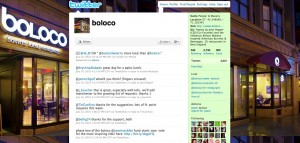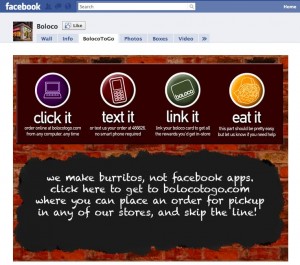Who doesn’t like the Old Spice social media campaign? It’s funny, original, and seems to prove the validity of social media, right?
Actually it doesn’t. And this is what’s been bugging me: what the campaign really says is that you too can succeed with a “social media campaign” … provided you are a very big company with a huge marketing budget and can pay teams of expensive talent to work around the clock.
Easy, right?
Old Spice introduced the hard-not-to-like Isaiah Mustafa first in a TV commercial launched in February of this year. The ad, in all its glory, is a traditional “disruptive” type of campaign: you didn’t turn on your TV hoping to see an Old Spice commercial, so the commercial needs to grab your attention — disrupt what you’re really watching — and make a humorous awareness/sell pitch. Which the ad does beautifully. According to this post from CBS, the ad took three days to shoot and 57 takes.
Oh — and the ad was unveiled during the Superbowl.
So let’s recap: The campaign started with a full-production national TV ad shot over 3 days, requiring teams of video and production (and post-production) talent, not to mention the hefty bill from the creative ad agency (Weiden + Kennedy). And then they purchased the most expensive commercial air time in the United States.
Everyone who can duplicate that raise your hand.
That’s what I thought.
So then they decided to make the ad that was seen in prime time by one of the most-watched sporting events “viral” by posting it on YouTube. As I’m sure the maker of every other Superbowl ad did as soon as they could. No doubt the success of the ad on YouTube got the P&G marketing team thinking how to capitalize on their YouTube “bounce.”
So the next phase, as this article on Read Write Web excellently detailed, was the round-the-clock shooting and creating of the “Old Spice Responses” series. So all they needed to do was hire a team of writers, video producers, social media experts and their attendant hard-typing and linking minions — for an around-the-clock schedule. Oh – and hire Isaiah Mustafa too.
Everyone who thinks that’s cheap raise your hand.
Now don’t get me wrong, I’m not criticizing the idea or even its execution. The point I’m making is that this type of marketing is not the norm of what’s possible for most companies, and it comes after spending major amounts of money for very expensive talent. And Procter & Gamble have literally decades of experience in coordinating traditional ad campaigns.
So what’s the lesson here?
Is the lesson that something popular can be spread to more people using social media? Well, sure, OK. That’s not exactly earth-shattering, but maybe it helps in your power-point presentation to clients. I still think, however, that when you show that slide that shows the however-millions of views the “Old Spice Response” campaign gets, the C-level executives in the room will be thinking “but how do we do a ‘viral’ campaign like that?”
According to the Old Spice campaign, the answer is “open your wallet” … then hope you have all the experience of a P&G … and pray. So is that the lesson marketers want to convey to their clients about social media’s effectiveness? Have a budget bigger than anyone else?
I think the real lesson of the campaign is that the “response” part is key. I think a WAY better example of the use of video and “response” to get marketing success is this post from Jay Baer’s Convince and Convert site. Further down you’ll see how a short video by a company responding to a popular YouTube video ended up getting a huge bounce — and no doubt notice from guitar enthusiasts. No big media budget, no big teams of hired talent working around the clock, no buying the most expensive air time on television.
Hooray for the little guys who can make this stuff work.
What do you think? Am I nuts? Let me know.
PS: I’m still not buying Old Spice – I don’t know anything about the product or why it’s different.


